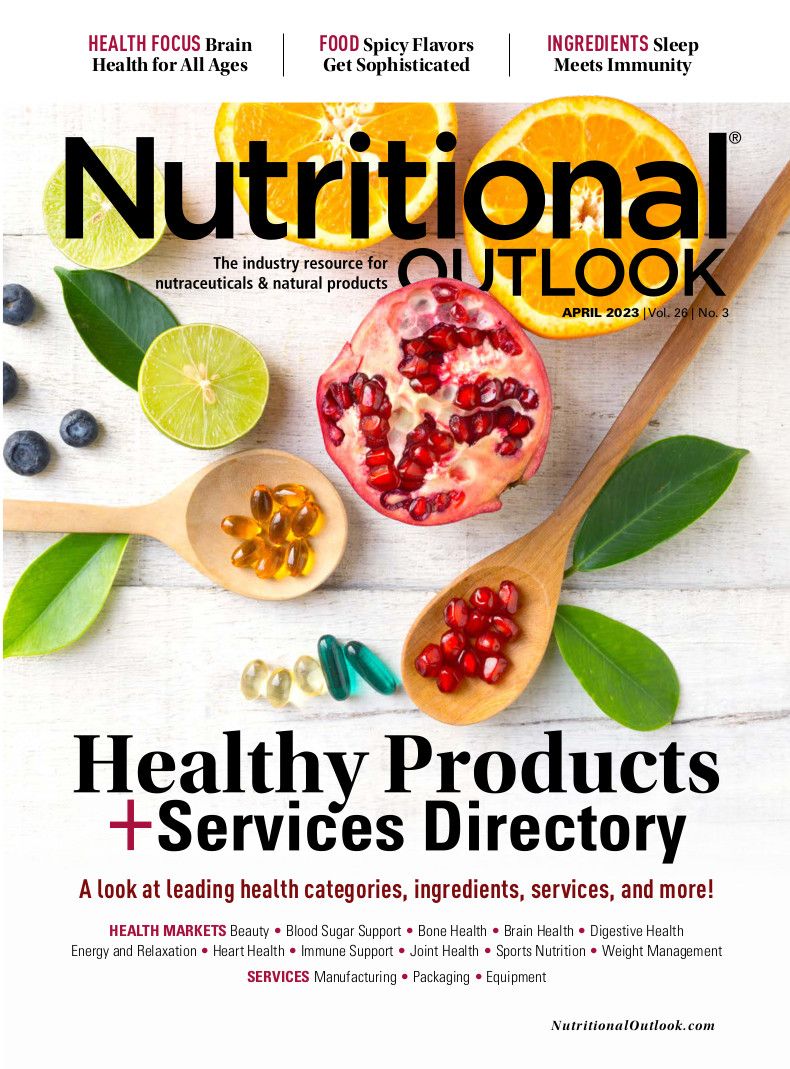The pandemic brought new consumers to the supplements market. How can companies keep this new audience engaged?
Consumers’ supplement preferences differ by generation. Sarah Marion from Murphy Research explains how to successfully market to today’s evolving supplement audience.
While no one would wish for a repeat of the past three years, the pandemic did have a few upsides. For one, consumers have come away with a newfound respect for their immune systems.
At Murphy Research, we’ve been tracking consumer engagement with both immunity and supplements, along with many other health and wellness touchpoints, since 2018 as part of the State of Our Health syndicated research program, the largest, most comprehensive information source on U.S. consumer attitudes and approaches to food, fitness, mindfulness, and more.
This data clearly shows a skyrocketing desire to boost immunity during the pandemic, which brought many new consumers to the vitamins, minerals, and supplements (VMS) category, a major upside for the industry. Compared to 2019, 14 million more U.S. teens and adults consume vitamins and supplements on a weekly basis today. This trend holds true across all age groups, with the biggest gains coming from teens and young adults, also known as Gen Z. Today, 53% of Gen Z report consuming supplements weekly compared to 42% in 2019.
These new behaviors have persisted even as most Americans have put the pandemic behind them. The result is a number of (largely younger) consumers newly engaged with the supplement category. While this is great news for brands in the space, younger consumers are also very price sensitive and have highly variable habits and lifestyles. They also bring a different approach to the category than older consumers. Understanding the differences between these approaches can help the industry keep these new consumers engaged, building a customer base for the future.
Sarah Marion, PhD

Different Generations, Different Approaches
Gen Z (ages 11-26) and Millennials (ages 27-42) share a similar approach to healthy eating that sets them apart from Boomers (ages 59-77) and, to a lesser extent, Gen X (ages 43-58). Younger consumers are much more likely to take a holistic view of their diets. They’re more likely to experiment with different ways of eating, like vegetarianism; going gluten- or sugar-free; or prioritizing organics. In other words, their approaches aim to improve the diet as a whole, rather than one single aspect.
Older folks, on the other hand, are more likely to take a tactical approach, avoiding specific negatives, like saturated fat or sodium, and adding specific positives, like fiber. Rather than change their whole eating philosophy, they aim to cut out “bad stuff” and increase “good stuff.”
However, the opposite is true when it comes to supplements. In the VMS category, it’s younger consumers who take a more tactical approach while older ones are more likely to use supplements as a general dietary improvement strategy. Gen Z and Millennials tend to take supplements aimed at specific needs and with specific claims around beauty, cognitive function, or digestion (and its corollary, immunity), just to name a few examples. They also report more specific motivations for taking supplements, which closely align with the types they consume. In other words, they’re treating VMS more like medicine and less like food.
Older consumers, on the other hand, are more likely to treat VMS like a nutritional insurance policy—a dietary supplement that rounds out their daily nutrition. This motivation is actually Boomers’ top reason for taking VMS. Younger consumers are much less likely to be motivated by this desire; only 42% of Gen Z and Millennials report taking VMS to ensure they’re getting enough nutrients in general, compared to 59% of Boomers. The difference in these approaches is apparent in their varying rates of multivitamin consumption. For older consumers, these are a given, and they have consistently stuck with them over the years, with almost two-thirds of Boomer VMS consumers taking a multivitamin. Younger folks are much less likely to take multivitamins at all—only half of Gen Z or Millennial VMS consumers take them—and they’ve actually grown even less likely to do so since 2019.
Keeping Younger Consumers Engaged
Older VMS consumers are more likely to take a “set it and forget it” approach to supplements, since they’re less interested in experimentation and more focused on simply rounding out their diets. Additionally, and probably related to this approach to VMS, older consumers are much more likely to take prescription and over-the-counter medications than younger ones. If younger consumers are treating VMS like medicine, older ones are treating medicine like medicine. Formulas and claims that are geared at meeting the general nutritional needs of older consumers will work just fine for them—and with older consumers living active lives for much longer than in the past, there is opportunity to tailor products to particular age groups and lifestyles.
Younger consumers, in contrast, bring their experimental approach to supplements as well as their diets generally. This means they’re likely bringing more scrutiny as well. More specific needs means younger consumers are more likely to want to see specific results, and an inclination to experiment (along with more price sensitivity for Gen Z) means they’re not going to stick with a product if it doesn’t deliver. As a result, VMS brands wanting to effectively reach these younger consumers can benefit from setting expectations with greater detail around benefits, how they are achieved, and what to look for.
Millennials and Gen Z are also deeply engaged with functional food and beverages, so supplements must make the case for how they complement or improve upon “real” food and beverage sources. Bioavailability, adherence to (and benefits for) specific types of eating plans, and quality cues around ingredients and efficacy are key. Younger consumers are quick to research products, ingredients, and functional claims. Make sure your product can stand up and speak to this scrutiny.
About the author
Sarah Marion, PhD, is director of syndicated research at Murphy Research. Murphy Research’s State of Our Health (SOOH) syndicated research program is the standard reference point for uncovering the underlying truths and trends that propel health, wellness, food, and fitness attitudes and behaviors. It is the largest and most comprehensive U.S. food and fitness tracker, offering an unparalleled depth and breadth of data informing exceptionally clear insights into almost every facet of American health and wellness. Due to SOOH’s comprehensive and longitudinal design, it can answer almost any question about food, fitness, health, or wellness, and can do so more accurately than can be achieved by looking at these topics in isolation or during a snapshot in time. The data can also be cut by key consumer subgroups of interest as needed. You can learn about SOOH, including the benefits of subscribing, by emailing Sarah Marion at smarion@murphyresearch.com.

Prinova acquires Aplinova to further increase its footprint in Latin America
April 7th 2025Prinova has recently announced the acquisition of Brazilian ingredients distributor Aplinova, which is a provider of specialty ingredients for a range of market segments that include food, beverage, supplements, and personal care.


























